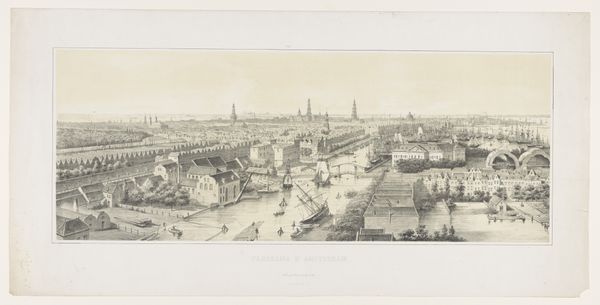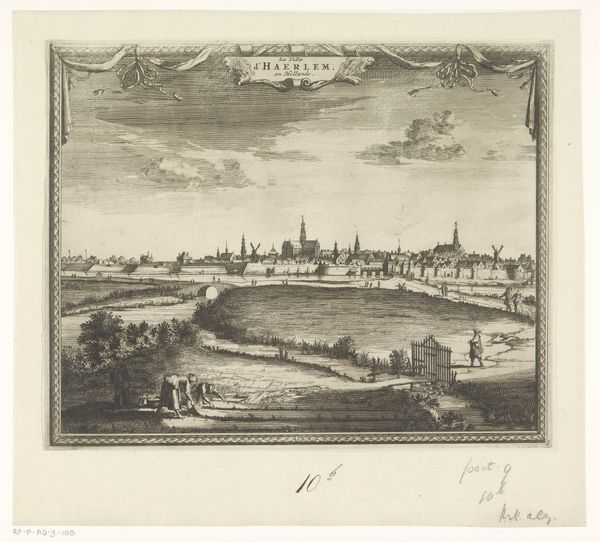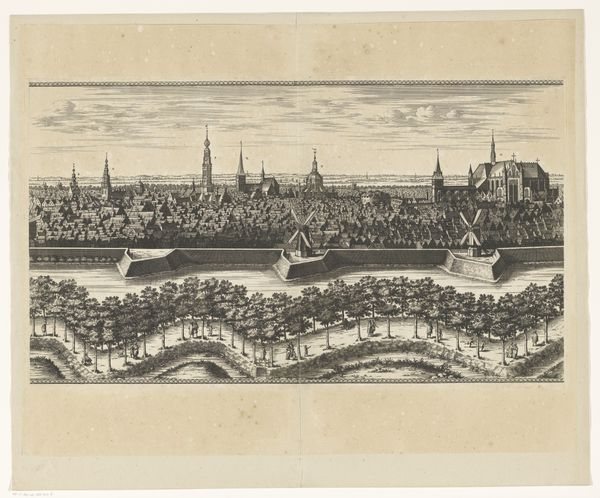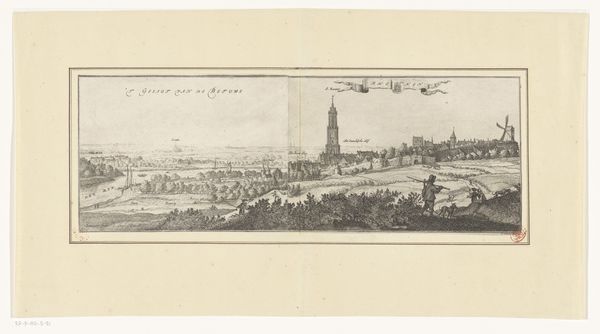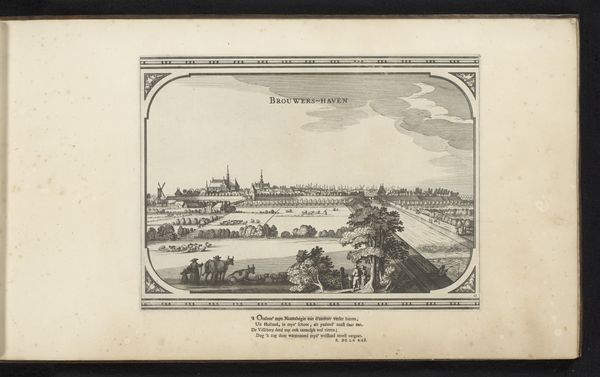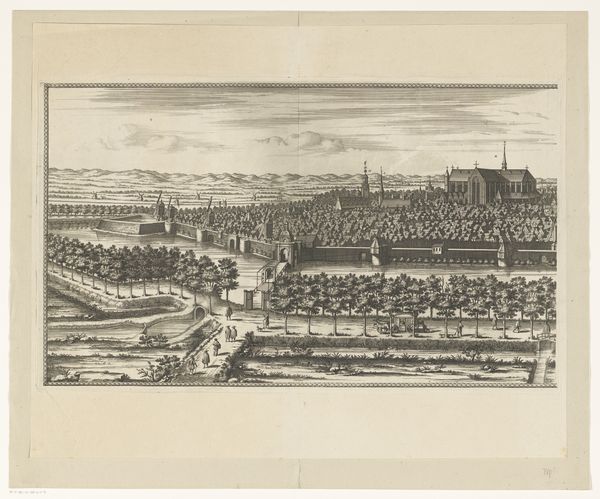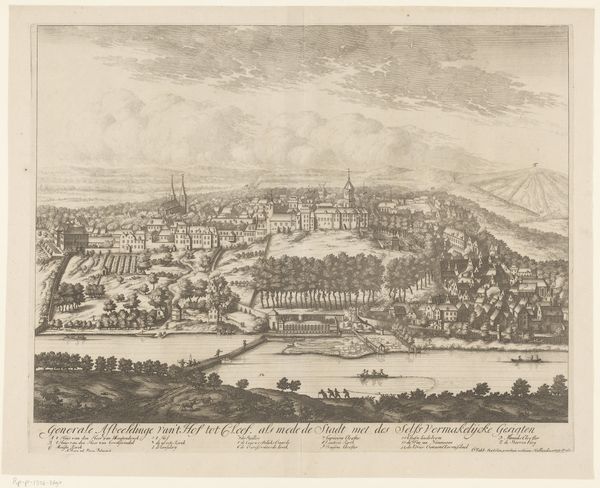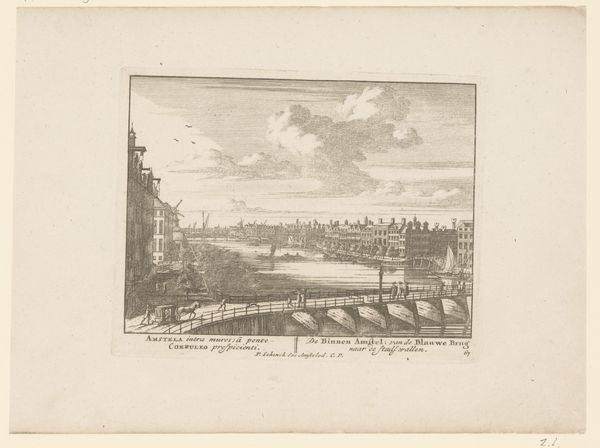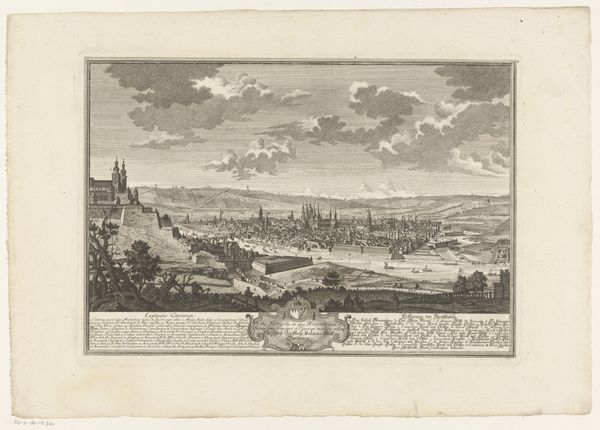
print, engraving
#
dutch-golden-age
# print
#
old engraving style
#
landscape
#
line
#
cityscape
#
engraving
#
realism
Dimensions: height 212 mm, width 279 mm
Copyright: Rijks Museum: Open Domain
Curator: Look at the detail in this engraving; Pieter Hendricksz. Schut’s "View of Middelburg from the Canal," created around 1720, offers a fascinating glimpse into the Dutch Golden Age. Editor: My first thought? Exquisite intricacy. The cityscape bristles with detail, doesn’t it? So precise, yet there’s a certain stillness, a quiet grandeur evoked by the greyscale and ordered lines. Curator: Exactly! Considering that it’s a print, probably one of many, think about the work involved in its production and distribution. Each line, each tiny figure… these are testaments to skill and labor in the 18th century. Engravings like these democratized access to landscapes for wider audiences. Editor: I agree; that sense of accessibility is key. From a formal standpoint, observe how Schut employs linear perspective, creating a captivating illusion of depth. Note, too, how the contrasting textures - the rough water against the smoothness of the architectural forms - create visual interest. Curator: Also the materiality—think of the copperplate, the inks, the press… the controlled application of force that allows images to become repeatable. Furthermore, such cityscapes weren’t just for viewing pleasure; they promoted a sense of civic pride and order in this era. They were commodities that embodied socio-economic progress and stability, Editor: I hadn’t considered it in that light, but I see your point. This piece feels more than representational—almost ideological. Perhaps a slightly idealized depiction of societal order. I'm now wondering if that low horizon might suggest an intentional diminishment of the natural world compared to Middelburg. Curator: That’s astute. And note that these weren’t individual artistic statements in the modern sense, but the product of collaboration and workshop production. Editor: It definitely adds a new dimension to how we consider “originality” or authorship, doesn't it? This close reading, both material and visual, deepens my appreciation. Curator: For me too, it becomes richer when thinking about how such pieces operated within broader economic and social currents. Editor: Yes, and appreciating how Schut skillfully translates the grandeur and civic identity through a mastery of lines, tone, and texture leaves a powerful final impression.
Comments
No comments
Be the first to comment and join the conversation on the ultimate creative platform.

